Out in November, purchasable in September. Contact IUP for reviewer copies “Rethinking Virtual Places” (in the IUP Spatial Humanities series) https://iupress.org/9780253058355/rethinking-virtual-places
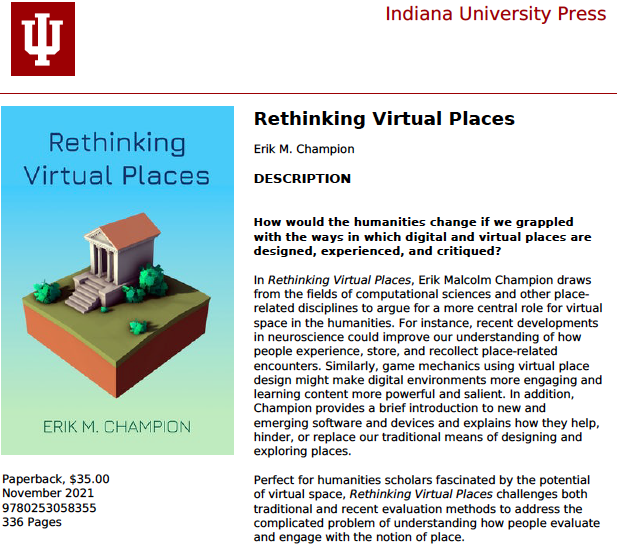

Out in November, purchasable in September. Contact IUP for reviewer copies “Rethinking Virtual Places” (in the IUP Spatial Humanities series) https://iupress.org/9780253058355/rethinking-virtual-places

Dear Rosa and Andrea (and Michael)
Thanks to the colleagues and co-authors who helped inspired me to edit a concise book for students that will be open access (i.e. free PDF downloads).
Virtual Heritage: A Guide will be available on Thursday 22 July 2021 at https://www.ubiquitypress.com
I’d appreciate any feedback from staff or students for future editions.

I have been informed, that if there are no major holdups the above will be available as a free online book from Ubiquity Press in July 2021. Cover image courtesy of Michael Carter.
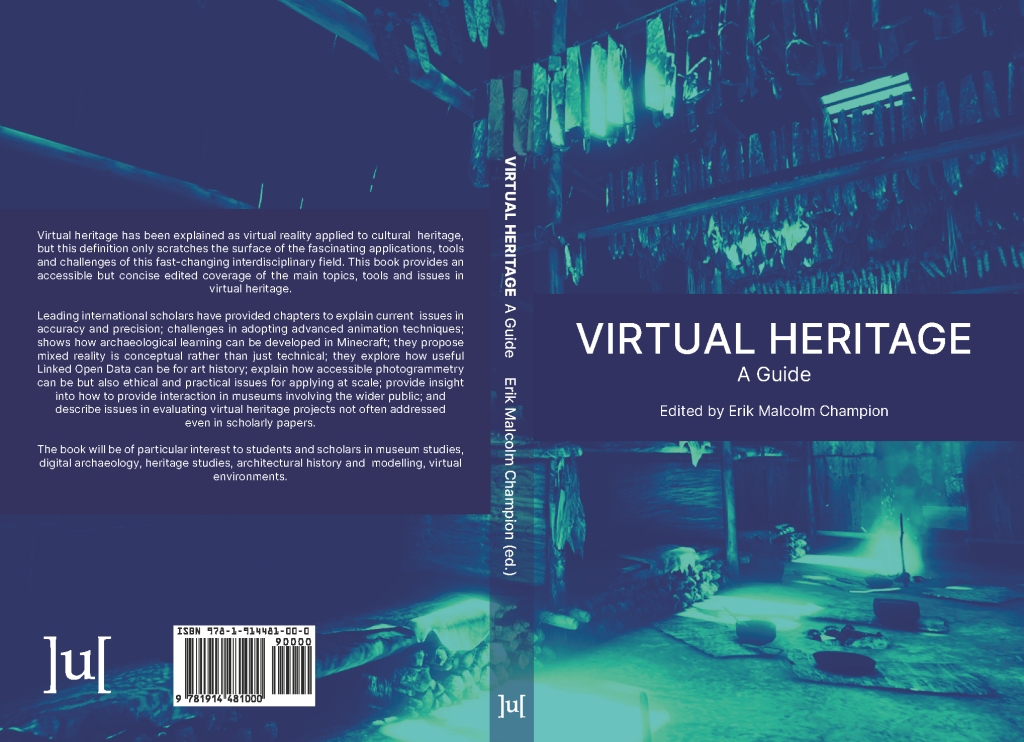
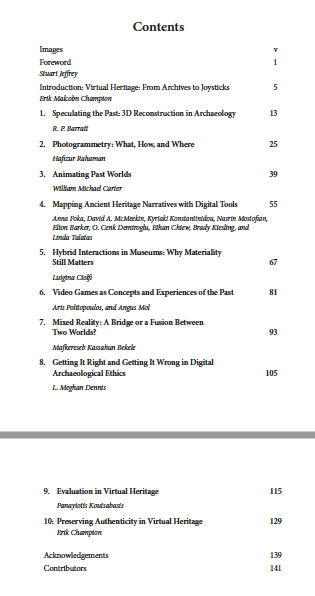
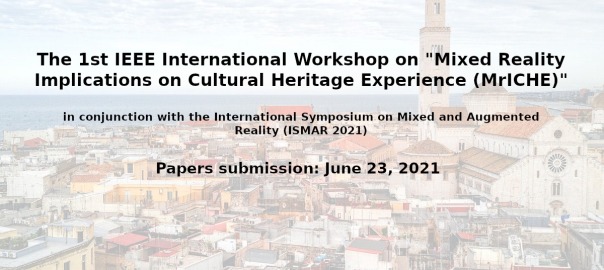
#CFP I was invited onto the program committee for IEEE International Workshop on “Mixed Reality Implications on Cultural Heritage Experience (MrICHE)”.
The workshop will be held in conjunction with the International Symposium on Mixed and Augmented Reality (ISMAR 2021, https://ismar21.org), 4-8 October 2021, Bari, Italy.
Submit: 4-8 page papers by 23 June! IEEE format. https://fcrlab.unime.it/calls/mriche2021 #ismar #culturalheritage #mixedreality #augmentedreality
For a Digital Learning Futures unit, I created a prototype website on gitbook with resources for Immersive Literacy (and XR via AFrame run and edited inside CodePen) as a potential teaching unit.
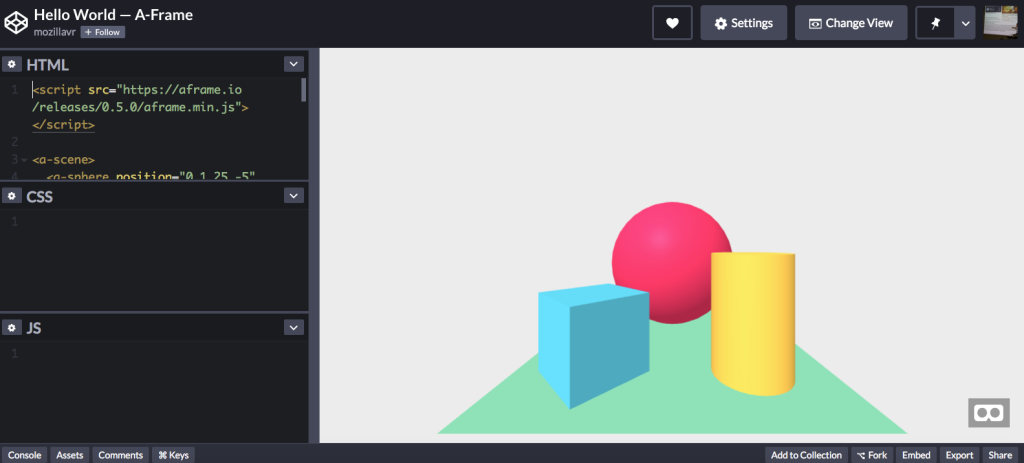
I also wrote a report (which won’t go online for now) but I’d like to thank the academics, students, teachers, librarians, and heritage practitioners, who provided feedback.

Henceforth, it is the map that precedes the territory – PRECESSION OF SIMULACRA – it is the map that engenders the territory and if we were to revive the fable today, it would be the territory whose shreds are slowly rotting across the map. It is the real, and not the map, whose vestiges subsist here and there, in the deserts which are no longer those of the Empire, but our own.
The desert of the real itself.
“ The Precession of Simulacra” from Baudrillard, Jean. Simulacra and Simulation. Michigan, USA: University of Michigan Press, 1994.
Aim of Essay
Update and Relate Simulations and Simulcra to the current era of Hacking and Virtual Reality.
I received a distinction on my essay so I will extend it back to its draft length and send that either to a journal or add it to my 2022 book proposal on theoretical VR. My next essay to write is on hacking in VR and some of the issues on authenticity, reality, and linking to / critiquing Jean Baudrillard’s dystopic warnings (which I read 30 years ago, amazing to think how relevant they still are, with some caveats).
But I also have some book proofing sessions to undergo.
Ideally, all my major writing will be finished this week as next week, lockdown lifts pending, I hope to travel (sadly, not for a holiday).

The below is an essay for a digital learning futures class. If the paper receives good feedback and interest I may try to develop it for a journal (or subsection of a book I am planning on critical virtual reality).
This essay suggests a modification of theoretical digital literacy frameworks to ensure they are suitable for designing educational (serious) games for the GLAM sector (using libraries as my initial focus). While not a librarian, I train people to create game prototypes for more engaging ways of communicating history, heritage, and digital collections (often found in Galleries, Libraries, Archives, and Museums-the GLAM sector).
I wish to develop a framework for game design to better assess what is learnt by end-users (game prototype participants) and game prototype designers (in this case, librarians). My concept of immersive digital literacies is discussed and applied to a review of software tools for the development of serious game prototypes.
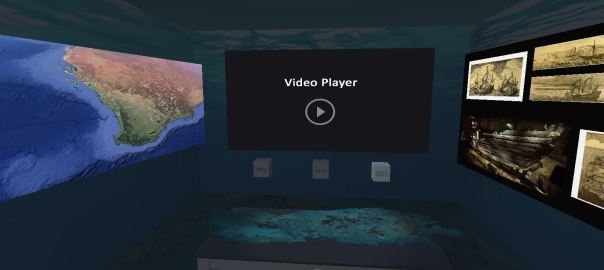
EuroMed2020 conference proceedings have been published by Springer.
Our paper: Champion, E., Kerr, R., McMeekin, D., & Rahaman, H. (2020, 29 October-3 November). Time-Layered Gamic Interaction with a Virtual Museum Template. Paper presented at the EuroMed 2020 Conference, Nicosia, Cyprus (online).

Part 7 of the ASEAN Australia Smart Cities Webinar Series on “Promoting Smart Tourism Recovery via Virtual Reality” slide presentations and the webinar recording are now available on the ADB Knowledge Events page.
The event was held March 2, 2021. My Cultural Tourism XR slides are also available on slideshare.net

Limited free paper on AR that speaks native names of flora back to you, “Audio-augmented arboreality: wildflowers and language”, published in Digital Creativity, Volume 32 Issue 1. First 50 copies are free.
(Image by Dr Hafizur Rahaman).
Virtual Archaeology Review declared my and Dr Rahaman’s 2020 paper “Survey of #3D digital heritage repositories and platforms” their paper of the year.
New article
Hafizur Rahaman, Michelle Johnston & Erik Champion (2021). Audio-augmented arboreality: wildflowers and language, Digital Creativity, DOI: 10.1080/14626268.2020.1868536 free for first 50 people:
Before colonization, there were over 250 languages spoken in Australia. Today only thirteen Indigenous languages are still being taught to children). Language has an important part to play in cultural maintenance and ‘closing the gap’ in terms of First Peoples’ cultural heritage, identity, and sense of belonging. In this work, we aim to develop an engaging and easy way to teach and learn the local Indigenous names of wildflowers using a mobile device. This paper presents the development of a phone application that runs on a local machine, recognizes local wildflowers through its camera, and plays associated sounds and displays associated text in the Noongar language. The prototype mobile application has been developed with MobileNets model on the TensorFlow platform. The dataset is derived from Google searches, while the sound files are generated from label text by running an apple script. UI and interactivity have been developed by using Vuforia and the Unity game engine. Finally, the Android Studio is used to deploy the app. At this point in time, the prototype can only recognize ten local flowers, with 85%∼99% of accuracy. We are working with a larger dataset towards developing the full application.
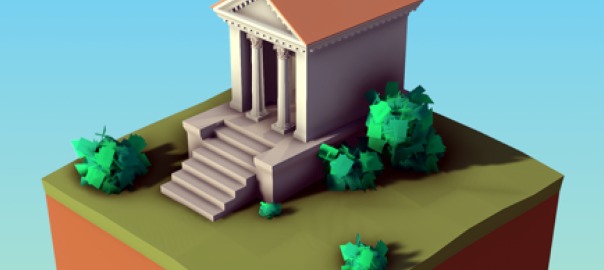

Was one of two book covers possible and I think due to some email confusion they didn’t choose my preferred cover but I really appreciate permission by Dr Anthony Masinton to use his rendered image. The publisher of Rethinking Virtual Places will be Indiana University Press, via their Spatial Humanities Series.

oh and examining PhD theses…
Awaiting news of European and Australian grant applications.

The paper “Time-Layered Gamic Interaction with a Virtual Museum Template” by Erik Champion, Rebecca Kerr, Hafizur Rahaman and David McMeekin will be presented virtually at EuroMed 2020 Conference next week. The project is part of the ARC funded project Time Layered Culture Map (tlc). Registration is free.
Abstract. This paper discusses a simplified workflow and interactive learning opportunities for exporting map and location data using a free tool, Recogito into a Unity game environment with a simple virtual museum room template. The aim was to create simple interactive virtual museums for humanities scholars and students with a minimum of programming or gaming experience, while still allowing for interesting time-related tasks. The virtual environment template was created for the Oculus Quest and controllers but can be easily adapted to other head-mounted displays or run on a normal desktop computer. Although this is an experimental design, it is part of a project to increase the use of time-layered cultural data and related mapping technology by humanities researchers.

Has anyone written on gaps (in power, features, or connection, etc.) between offsite (desktop virtual environments (VEs), and headset VEs) and mobile device-based AR/MR that augments the experience onsite?
Seems to me the offsite desktop environments (and headset VR) experiences are often silos while the onsite/mobile (phone or tablet) AR/MR experiences are typically limited, break down easily, and don’t fully leverage connectivity potential.
I have seen papers on either platform, of course, but not papers explaining why we are missing great potential synergy between the two: offside VR/VE and onsite XR (MR AR).

I’m very happy that my rather large article “Culturally Significant Presence
In Single-Player Computer Games” has been accepted for the ACM Journal on Computing and Cultural Heritage. This is despite its 12,587 words covering 4 major games, and attempting to be more conceptual and provocative than normal in a traditional ACM IT-oriented journal..
Very good reviewers too, actually. They made me work hard. I think my abstract is a bit over JOCCH length so that may change but at moment it is:
Cultural presence is a term that researchers have used to explain and evaluate cultural learning in virtual heritage projects, but less frequently in video games. Given the increasing importance of video games to cultural heritage, this paper investigates explanations of cultural presence that could be communicated by games, especially concerning UNESCO and ICOMOS definitions of cultural significance. The aim is to determine if cultural presence can be communicated via video games and across a range of game genres.
Observations derived from game prototyping workshops for history and heritage were incorporated to help develop a teachable list of desirable game elements. To distinguish itself from the vagueness surrounding theories of cultural presence, a theory of culturally significant presence is proposed. Culturally significant presence requires three components: culturally significant artifacts and practices; an overarching framework of a singular, identifiable cultural viewpoint; and awareness by the participant of both the culturally significant and the overarching cultural framework and perspective (which gives cultural heritage sites, artifacts and practices their cultural significance and relational value).
As awareness of cultural presence requires time to reflect upon, single-player games were chosen that were not completely dependent on time-based challenges. Another criterion was cultural heritage content, the games must simulate aspects of cultural heritage and history, communicate a specific cultural framework, or explore and reconstruct a past culture. Four games were chosen that simulate a culture, explain archaeological methods, portray indigenous intangible heritage, or explain historical-based ecosystems of the past based on educational guidelines. The games are Assassin’s Creed: Origins (and its Discovery Tour); Heaven’s Vault; Never Alone; and a Ph.D. game project: Saxon. Their genres could be described as first-person shooter/open world/virtual tour; dialogue-based puzzle game; 2D platform game; and turn-based strategy game.
The aim is not to evaluate the entire range of interactive and immersive virtual environments and games, but to examine the applicability and relevance of the new theory, and to ascertain whether the four games provided useful feedback on the concept and usefulness of culturally significant presence. A more clearly demarcated theory of cultural presence may not only help focus evaluation studies but also encourage game developers to modify or allow the modification of commercial games for classroom teaching of digital heritage. Game content, core gameplay, secondary gameplay, and game mechanics could be modified to engagingly compel players to consider cultural heritage values and perspectives that are not their own.
I was intending to propose the following book proposal to a major publisher. I think, with recent events, I will wait until the end of 2020 before I revisit the project/proposal, but any feedback would be useful (too simplistic, not relevant, missing important key ideas etc)..
Below is an abridged extract:
At various conferences over the years, in game studies, virtual worlds, or philosophy of place, I am continually reminded how easily philosophy has been haphazardly inserted into presentations by game, VR, and media studies scholars. But I have also been surprised at the low level of engagement in VR concepts (in terms of computer science and user experience design) by philosophers.
For example, the famous philosopher Hubert Dreyfus conflated the Internet with the World Wide Web in his book On the Internet. The public may not see a distinction between an international organization of servers, and the software that links the webpages that runs on these servers but it is a crucial distinction to make when you are building and deploying VR. However, Professor Dreyfus also made a philosophical and historical error: using Kierkegaard’s and Nietzsche’s criticisms of the 19th century press to extrapolate that they would have hated the Internet (Dreyfus probably meant webpages, not the Internet).
The Internet is now merging, in fits and starts, with VR. There are massive gaps between the popular concept of VR, the development of VR “in the trenches” and the contextual soundness of the philosophers who talk to the public about VR. And very little literature bridging these communities at an accessible and useful level for university students.
This book aims to clarify conflicting interpretations of virtual reality (VR) in a way that would allow beginning scholars to quickly find key philosophers or methods and apply them appropriately to conceptual problems in the development and evaluation of VR projects. It is not a manual to design VR environments, nor a treatise on philosophy to philosophers, but a guide to explaining how even traditional philosophical questions can be re-examined using current and future VR technologies.

I mentioned this before (it went through 3 years of reviews) but the (updated) Rethinking Virtual Places book (97,000 words, approx 30 images) will be published by Indiana University Press in The Spatial Humanities series. Probably in 2021.
| 1-A Potted History of Virtual Reality |
| 2-Dead, Dying, Failed Worlds |
| 3-Architecture: Places Without People |
| 4-Theories of Place & Cyberspace |
| 5-Rats & Goosebumps-Mind, Body & Embodiment |
| 6-Games are not Interactive Places |
| 7-Do Serious Gamers Learn From Place? |
| 8-Cultural Places |
| 9-Evaluating Sense of Place, Virtual Places & Virtual Worlds |
| 10-Place-Making Interfaces & Platforms |
| 11-Conclusion |